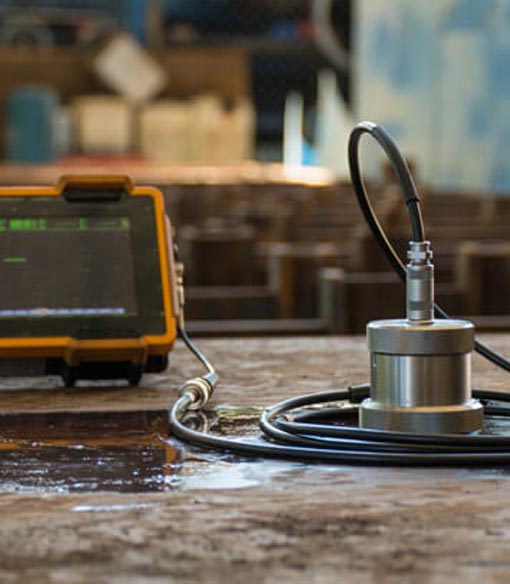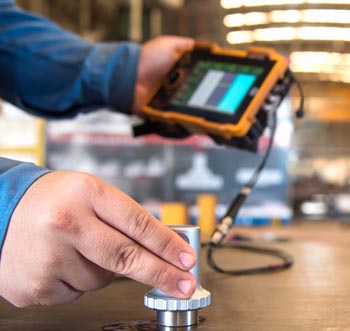Open Hours
Sat-Thurs: 7.00 PM-4.00 AM; Fri: Off
+96613667 6894
eci@eccgroupksa.com
Non-Destructive Testing (NDT)
To perform a Non-Destructive Testing service at the highest quality that fully satisfy the expectations of our customers at all times; Because NDT does not permanently alter the article being inspected, we assure that our technicians has the highest-valuable technique that can save both money and time in product evaluation, troubleshooting and research wherein we can courteously provide to our customer the precise information or services requested and live up-to an image of professionalism with integrity and sincerity.
Most common methods we are practicing include
- Radiographic Testing(RT)
- Ultrasonic Testing(UT)
- Magnetic Partical Testing(MPT)
- Ultra Sonic Thickness Gauging(UTG)
- Penetrant Testing (PT)
- Visual/Optical Testing (VT)
- Radiography Film Interpretation Services(RTFI)
RADIOGRAPHIC TESTING(RT):
This technique involves the use of penetrating Gamma or X-ray radiation to examine parts and products for imperfections. An X-ray machine or radioactive isotope is used as a source of radiation. Radiation is directed through a part and onto film or other media.The resulting shadowgraph shows the internal soundness of the part. Possible imperfections are indicated as variations in the film.
ULTRASONIC TESTING (UT):
Ultrasonic Inspection is a non-destructive testing method in which beams of high-frequency sound waves are introduced into materials for the detection of subsurface flaws in the material. The reflected beam is displayed and then analyzed to define the presence and location of flaws or discontinuities.
MAGNETIC PARTICAL TESTING (MPT):
Magnetic Particle Inspection (MPI) is used for the detection of surfaces and near-surface flaws in ferromagnetic materials. A magnetic field is applied to the specimen, using a permanent magnet (or) electromagnet to detect imperfections in material, using the following yokes and prods.
- AC Yoke
- AC|DC Yoke
ULTRA SONIC THICKNESS GAUGING (UTG):
Ultrasonic Thickness Gauging is a widely used non desructive testing technique for measuring the thickness of a material from one side. It is fast, reliable, and versatile, and unlike a micrometer or calliper it requires access to only one side of the test piece. It will give very accurate results in terms of micrometer and,as per client requirements we can access the painted surfaces and cladding surfaces also.
PENETRANT TESTING (PT):
Apart from visual inspection this is probably the oldest and most widely used of all the NDT methods. It can be used on any non-porous material. Its use is confined to the detection of surface breaking defects.
VISUAL/OPTICAL TESTING (VT):
Visual Inspection is one of the NDT methods used extensively to evaluate the condition or the quality of a weld or component. It is easily carried out, inexpensive and usually doesn’t require special equipment. It reqiures good vision, good lighting and the knowledge of what to look for.
RADIOGRAPHY FILM INTERPRETATION SERVICES(RTFI):
In addition to producing high quality radiographs, we are providing Radiography Film Interpretation Services (RTFI) for clients as per their requirements, we also supply well experienced RTFI Manpower to clients. Interpretation of radiographs takes place in three basic steps:
- Detection
- Interpretation and
- Evaluation.


